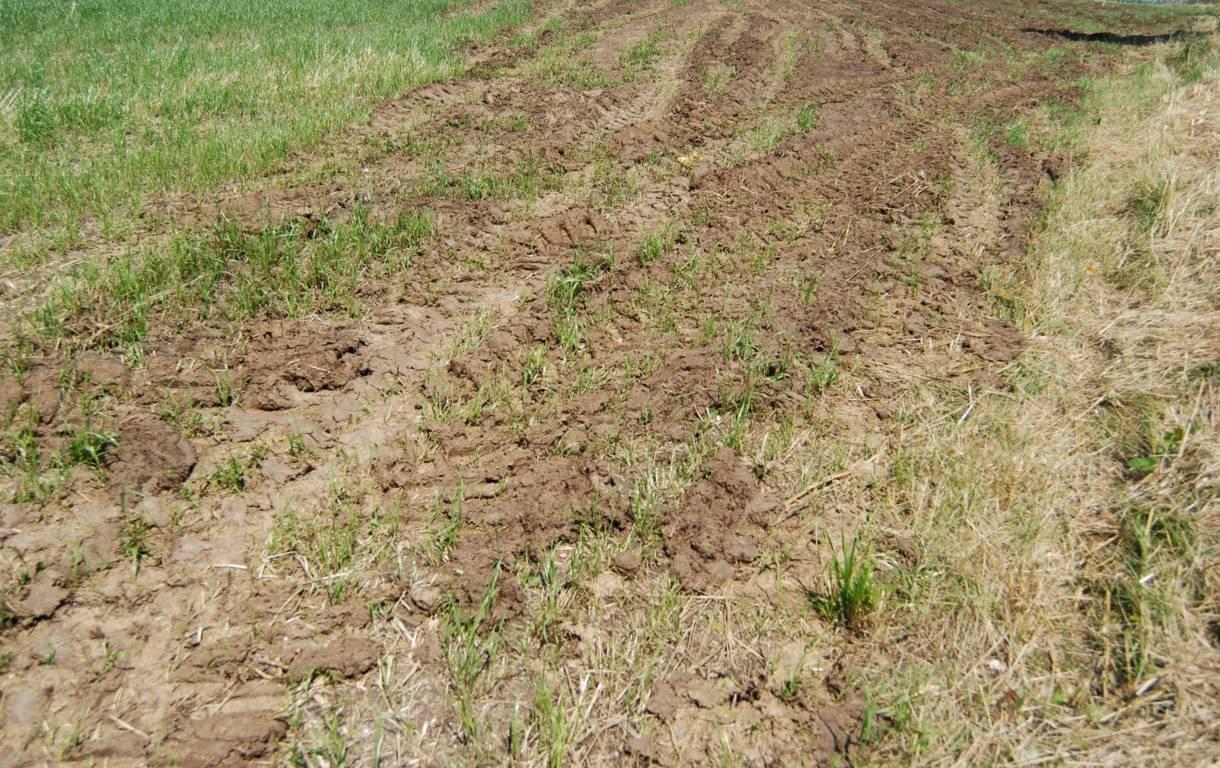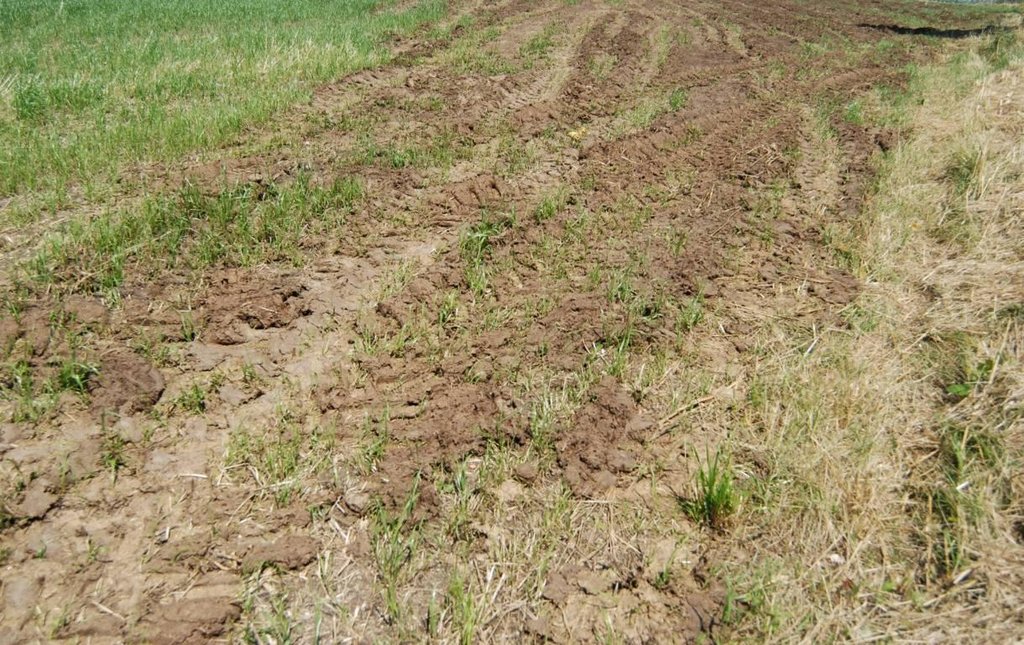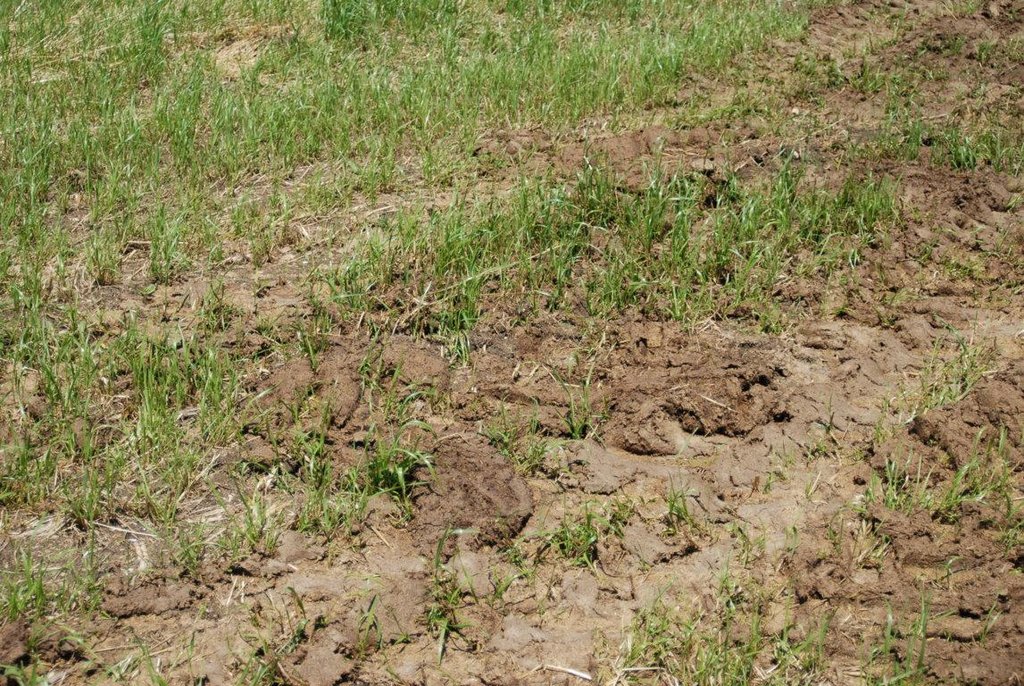Pasture manuring (application of manure from shelter) [Italie]
- Création :
- Mise à jour :
- Compilateur : Velia De Paola
- Rédacteur : –
- Examinateurs : Fabian Ottiger, Alexandra Gavilano
technologies_1209 - Italie
Voir les sections
Développer tout Réduire tout1. Informations générales
1.2 Coordonnées des personnes-ressources et des institutions impliquées dans l'évaluation et la documentation de la Technologie
Spécialiste GDT:
Salvia Rosanna
University of Basilicata
Italie
Spécialiste GDT:
Quaranta Giovanni
University of Basilicata
Italie
Nom du projet qui a facilité la documentation/ l'évaluation de la Technologie (si pertinent)
Catastrophic shifts in drylands (EU-CASCADE)Nom du ou des institutions qui ont facilité la documentation/ l'évaluation de la Technologie (si pertinent)
University of Basilicata - Italie1.3 Conditions relatives à l'utilisation par WOCAT des données documentées
Le compilateur et la(les) personne(s) ressource(s) acceptent les conditions relatives à l'utilisation par WOCAT des données documentées:
Oui
2. Description de la Technologie de GDT
2.1 Courte description de la Technologie
Définition de la Technologie:
Application of manure in valuable pastures to increase grass recover and reduce shrub encroachment
2.2 Description détaillée de la Technologie
Description:
This is a technique used on animal husbandry farms with either deep litter housing systems (sheep and goat manure) or manure heaps (cattle manure). Manure spreading is carried out twice a year but on different land.
In the case of deep litter housing systems fresh straw is continuously spread over soiled litter in layers. After around six months the deep litter bedding is removed and mechanically spread on pasture lands or arable land.
In the case of cattle farms animal waste is transferred daily to the farm’s manure heap where it is left to decompose for at least a year. Also in this case straw is added for the animals’ comfort and hygiene and is added to the manure heap together with faeces.
Once the manure is ready it is spread on areas of land which can be farmed using mechanical means In the case of arable cropland manure is immediately buried by ploughing, in the case of pasture land it is spread at the beginning of autumn and left on the surface without ploughing (if not occasionally a harrow might be used to break down the manure to increase even distribution and penetration).
Purpose of the Technology: Increase growth of palatable species, increase value of grazing area
Natural / human environment: The technique is an agronomic measure which is applied on meadows, pastures and cropland in an area with a sub-humid climate, moderate scope and shallow clayey soil.
As to the context of production, it is characterised by a medium level of mechanisation (only the most demanding operations are carried out using mechanical means), the production system is essentially mixed, a small part is destined for personal consumption whilst the bulk of production is destined for local markets. The property is predominantly privately owned but also includes some public land, especially in the case of pasture land. Most farms in the area are livestock farms whilst the agricultural component is destined exclusively for private consumption.
2.3 Photos de la Technologie
2.5 Pays/ région/ lieux où la Technologie a été appliquée et qui sont couverts par cette évaluation
Pays:
Italie
Région/ Etat/ Province:
Basilicata
Autres spécifications du lieu:
Castelsaraceno
Spécifiez la diffusion de la Technologie:
- répartie uniformément sur une zone
S'il n'existe pas d'informations exactes sur la superficie, indiquez les limites approximatives de la zone couverte:
- 0,1-1 km2
2.6 Date de mise en œuvre de la Technologie
Si l'année précise est inconnue, indiquez la date approximative: :
- il y a plus de 50 ans (technologie traditionnelle)
2.7 Introduction de la Technologie
Spécifiez comment la Technologie a été introduite: :
- dans le cadre d'un système traditionnel (> 50 ans)
3. Classification de la Technologie de GDT
3.2 Type(s) actuel(s) d'utilisation des terres, là où la Technologie est appliquée
Les divers types d'utilisation des terres au sein du même unité de terrain: :
Oui
Précisez l'utilisation mixte des terres (cultures/ pâturages/ arbres):
- Agropastoralisme (y compris les systèmes culture-élevage intégrés)

Terres cultivées
- Cultures annuelles
Nombre de période de croissance par an: :
- 1
Précisez:
Longest growing period in days: 120 Longest growing period from month to month: March to august

Pâturages
Pâturage extensif:
- Pastoralisme de type semi-nomade
- Ranching
Type d'animal:
- caprine
- ovins
- cows
Commentaires:
Major land use problems (compiler’s opinion): Decrease of value of pastures due to under grazing and shrub encroachment
Major land use problems (land users’ perception): Decrease of value of pastures due to under grazing and shrub encroachment
Semi-nomadism / pastoralism: Shepherds use the area for summer grazing and move downhill in winter
Mixed: (eg agro-pastoralism, silvo-pastoralism): A reduced number of farmers cultivate their field for fodder and pastures
Grazingland comments: Sheep and goats are the most valuable livestock
Type of grazing system comments: Sheep and goats are the most valuable livestock
Livestock density (if relevant): > 100 LU /km2
3.4 Approvisionnement en eau
Commentaires:
Water supply: rainfed, mixed rainfed - irrigated
3.5 Groupe de GDT auquel appartient la Technologie
- gestion intégrée de la fertilité des sols
3.6 Mesures de GDT constituant la Technologie

pratiques agronomiques
- A2: Matière organique/ fertilité du sol
Commentaires:
Main measures: agronomic measures
Type of agronomic measures: manure / compost / residues
3.7 Principaux types de dégradation des terres traités par la Technologie

dégradation biologique
- Bs: baisse de la qualité et de la composition/ diversité des espèces
- Bl: perte de la vie des sols
Commentaires:
Main type of degradation addressed: Bs: quality and species composition /diversity decline
Secondary types of degradation addressed: Bl: loss of soil life
Main causes of degradation: other human induced causes (specify) (Undergrazing, decrease in land use and land management), labour availability (Between 1970m and 1980 industrial activities in the region pushed people to abandon farming activities)
Secondary causes of degradation: population pressure (The change in the economic activity induced a massive depopulation)
3.8 Prévention, réduction de la dégradation ou réhabilitation des terres dégradées
Spécifiez l'objectif de la Technologie au regard de la dégradation des terres:
- prévenir la dégradation des terres
4. Spécifications techniques, activités, intrants et coûts de mise en œuvre
4.1 Dessin technique de la Technologie
Spécifications techniques (associées au dessin technique):
Technical knowledge required for land users: moderate
Secondary technical functions: increase in organic matter, promotion of vegetation species and varieties (quality, eg palatable fodder)
Manure / compost / residues
Material/ species: Litter from stable and organic component
4.2 Informations générales sur le calcul des intrants et des coûts
autre/ monnaie nationale (précisez):
euro
Indiquez le taux de change des USD en devise locale, le cas échéant (p.ex. 1 USD = 79.9 réal brésilien): 1 USD = :
0,74
Indiquez le coût salarial moyen de la main d'œuvre par jour:
81.08
4.5 Activités d'entretien/ récurrentes
| Activité | Calendrier/ fréquence | |
|---|---|---|
| 1. | Emptying of deep litter bedding or manure hap | 2 per year |
| 2. | Spreading of manure on 3 hectares of pasture land | 2 per year |
| 3. | Hire of manure spreader | 2 per year |
4.6 Coûts et intrants nécessaires aux activités d'entretien/ récurrentes (par an)
| Spécifiez les intrants | Unité | Quantité | Coûts par unité | Coût total par intrant | % du coût supporté par les exploitants des terres | |
|---|---|---|---|---|---|---|
| Main d'œuvre | Emptying of deep litter bedding or manure hap | ha | 1,0 | 324,3 | 324,3 | 100,0 |
| Main d'œuvre | Spreading of manure on 3 hectares of pasture land | ha | 3,0 | 972,9 | 2918,7 | 100,0 |
| Main d'œuvre | Hire of manure spreader | ha | 1,0 | 283,78 | 283,78 | 100,0 |
| Coût total d'entretien de la Technologie | 3526,78 | |||||
| Coût total d'entretien de la Technologie en dollars américains (USD) | 4765,92 | |||||
Commentaires:
Machinery/ tools: manure spreader
4.7 Facteurs les plus importants affectant les coûts
Décrivez les facteurs les plus importants affectant les coûts :
Assuming that the production of manure (as described above) happens on farm, the critical point of the application of the technique is the availability of equipment for spreading. The largest farms buy the equipment spending from 35,000 to 40,000 euro depending on the machines’ working capacities. The smaller farms (which represent the vast majority) rent this equipment (from third parties) twice a year at an overall cost of around €70 an hour.
5. Environnement naturel et humain
5.1 Climat
Précipitations annuelles
- < 250 mm
- 251-500 mm
- 501-750 mm
- 751-1000 mm
- 1001-1500 mm
- 1501-2000 mm
- 2001-3000 mm
- 3001-4000 mm
- > 4000 mm
Spécifications/ commentaires sur les précipitations:
68% in winter and 15% in summer
Zone agro-climatique
- subhumide
Thermal climate class: temperate
5.2 Topographie
Pentes moyennes:
- plat (0-2 %)
- faible (3-5%)
- modéré (6-10%)
- onduleux (11-15%)
- vallonné (16-30%)
- raide (31-60%)
- très raide (>60%)
Reliefs:
- plateaux/ plaines
- crêtes
- flancs/ pentes de montagne
- flancs/ pentes de colline
- piémonts/ glacis (bas de pente)
- fonds de vallée/bas-fonds
Zones altitudinales:
- 0-100 m
- 101-500 m
- 501-1000 m
- 1001-1500 m
- 1501-2000 m
- 2001-2500 m
- 2501-3000 m
- 3001-4000 m
- > 4000 m
5.3 Sols
Profondeur moyenne du sol:
- très superficiel (0-20 cm)
- superficiel (21-50 cm)
- modérément profond (51-80 cm)
- profond (81-120 cm)
- très profond (>120 cm)
Texture du sol (de la couche arable):
- fin/ lourd (argile)
Matière organique de la couche arable:
- moyen (1-3%)
Si disponible, joignez une description complète du sol ou précisez les informations disponibles, par ex., type de sol, pH/ acidité du sol, capacité d'échange cationique, azote, salinité, etc.
Soil fertility is medium-low
Soil drainage/infiltration is good
Soil water storage capacity is medium
5.4 Disponibilité et qualité de l'eau
Profondeur estimée de l’eau dans le sol:
5-50 m
Disponibilité de l’eau de surface:
moyenne
Qualité de l’eau (non traitée):
eau potable
Commentaires et précisions supplémentaires sur la qualité et la quantité d'eau:
Availability of surface water is medium (minimum during month of September and October)
5.5 Biodiversité
Diversité des espèces:
- moyenne
5.6 Caractéristiques des exploitants des terres appliquant la Technologie
Orientation du système de production:
- commercial/ de marché
Revenus hors exploitation:
- > 50% de tous les revenus
Niveau relatif de richesse:
- moyen
Individus ou groupes:
- individu/ ménage
Genre:
- hommes
Indiquez toute autre caractéristique pertinente des exploitants des terres:
Land users applying the Technology are mainly common / average land users
Difference in the involvement of women and men: Active farmers are present only males; women are not actively involved in land management.
Population density: 10-50 persons/km2
Annual population growth: negative; 2%
90% of the land users are average wealthy.
10% of the land users are poor.
Off-farm income specification: Most of the off farm income derives from public sector, i.e. Municipality, Mountain Community, Region and other public bodies. Very few farmer members run local shops or handcraft.
5.7 Superficie moyenne des terres utilisées par les exploitants des terres appliquant la Technologie
- < 0,5 ha
- 0,5-1 ha
- 1-2 ha
- 2-5 ha
- 5-15 ha
- 15-50 ha
- 50-100 ha
- 100-500 ha
- 500-1 000 ha
- 1 000-10 000 ha
- > 10 000 ha
Cette superficie est-elle considérée comme de petite, moyenne ou grande dimension (en se référant au contexte local)?
- petite dimension
Commentaires:
15-50 ha (Considering communal land used by farmers)
5.8 Propriété foncière, droits d’utilisation des terres et de l'eau
Propriété foncière:
- communauté/ village
- individu, avec titre de propriété
Droits d’utilisation des terres:
- communautaire (organisé)
- individuel
5.9 Accès aux services et aux infrastructures
santé:
- pauvre
- modéré
- bonne
éducation:
- pauvre
- modéré
- bonne
assistance technique:
- pauvre
- modéré
- bonne
emploi (par ex. hors exploitation):
- pauvre
- modéré
- bonne
marchés:
- pauvre
- modéré
- bonne
énergie:
- pauvre
- modéré
- bonne
routes et transports:
- pauvre
- modéré
- bonne
eau potable et assainissement:
- pauvre
- modéré
- bonne
services financiers:
- pauvre
- modéré
- bonne
6. Impacts et conclusions
6.1 Impacts sur site que la Technologie a montrés
Impacts socio-économiques
Production
production fourragère
Quantité avant la GDT:
8t/ha
Quantité après la GDT:
11t/ha
qualité des fourrages
Commentaires/ spécifiez:
The quality of the fodder increases due to the increase of protein content.
Disponibilité et qualité de l'eau
demande pour l'eau d'irrigation
Revenus et coûts
revenus agricoles
Commentaires/ spécifiez:
Net return from this activity increases due to yield increases.
Impacts socioculturels
situation sanitaire
apaisement des conflits
Improved livelihoods and human well-being
Impacts écologiques
Cycle de l'eau/ ruissellement
ruissellement de surface
Sols
humidité du sol
perte en sol
encroûtement/ battance du sol
compaction du sol
cycle/ recharge des éléments nutritifs
matière organique du sol/ au dessous du sol C
Biodiversité: végétale, animale
biomasse/ au dessus du sol C
diversité végétale
espèces bénéfiques
diversité des habitats
contrôle des animaux nuisibles/ maladies
Réduction des risques de catastrophe et des risques climatiques
émissions de carbone et de gaz à effet de serre
Autres impacts écologiques
Benefits from soil ecology
Commentaires/ spécifiez:
The application of manure increases the soil organic matter content. As The application of manure increases the soil organic matter content. As well known the increases in organic matter content turns in important benefits from the soil ecology.
6.2 Impacts hors site que la Technologie a montrés
flux des cours d'eau fiables et stables en saison sèche
Commentaires/ spécifiez:
The application of manure due to its beneficial effects on soil parameters, allows to keep grass and crops healty along the year so protecting soil. Poor soils , without manure application, can not sustaine grasses all over the year making it at erosion
inondations en aval
Commentaires/ spécifiez:
The application of manure due to its beneficial effects on soil parameters, allows to keep grass and crops healty along the year so protecting soil. Poor soils , without manure application, can not sustaine grasses all over the year making it at erosion
capacité tampon/de filtration
Commentaires/ spécifiez:
The application of manure due to its beneficial effects on soil parameters, allows to keep grass and crops healty along the year so protecting soil. Poor soils , without manure application, can not sustaine grasses all over the year making it at erosion
6.3 Exposition et sensibilité de la Technologie aux changements progressifs et aux évènements extrêmes/catastrophes liés au climat (telles que perçues par les exploitants des terres)
Changements climatiques progressifs
Changements climatiques progressifs
| Saison | Augmentation ou diminution | Comment la Technologie fait-elle face à cela? | |
|---|---|---|---|
| températures annuelles | augmente | bien |
Extrêmes climatiques (catastrophes)
Catastrophes météorologiques
| Comment la Technologie fait-elle face à cela? | |
|---|---|
| pluie torrentielle locale | bien |
| tempête de vent locale | bien |
Catastrophes climatiques
| Comment la Technologie fait-elle face à cela? | |
|---|---|
| sécheresse | bien |
Catastrophes hydrologiques
| Comment la Technologie fait-elle face à cela? | |
|---|---|
| inondation générale (rivière) | bien |
Autres conséquences liées au climat
Autres conséquences liées au climat
| Comment la Technologie fait-elle face à cela? | |
|---|---|
| réduction de la période de croissance | bien |
6.4 Analyse coûts-bénéfices
Quels sont les bénéfices comparativement aux coûts d'entretien récurrents (du point de vue des exploitants des terres)?
Rentabilité à court terme:
neutre / équilibrée
Rentabilité à long terme:
neutre / équilibrée
6.5 Adoption de la Technologie
De tous ceux qui ont adopté la Technologie, combien d'entre eux l'ont fait spontanément, à savoir sans recevoir aucune incitation matérielle, ou aucune rémunération? :
- 91-100%
Commentaires:
10% of land user families have adopted the Technology with external material support
Comments on acceptance with external material support: Part of the implementing farms have adopted the technology thanks to support in buying ad hoc machinery
90% of land user families have adopted the Technology without any external material support
There is a little trend towards spontaneous adoption of the Technology
Comments on adoption trend: High cost of fuel are reducing the rate of adoption given the high machinery requirements
6.7 Points forts/ avantages/ possibilités de la Technologie
| Points forts/ avantages/ possibilités du point de vue de l'exploitant des terres |
|---|
|
It’s the only natural way to fertilize pasture and croplands. This avoids the use of chemical fertilizers and external inputs. This also provides great beneficial effects on the milk/meat quality through better grass. How can they be sustained / enhanced? Providing subsides both to machinery and organic production |
| Points forts/ avantages/ possibilités du point de vue du compilateur ou d'une autre personne ressource clé |
|---|
|
The farms try to concentrate their activities and so they try to improve local (close by) pastureland. The technology increases the grass productivity and so helping farms to reduce time of grazing. How can they be sustained / enhanced? Supporting ad hoc machinery and equipment. |
6.8 Faiblesses/ inconvénients/ risques de la Technologie et moyens de les surmonter
| Faiblesses/ inconvénients/ risques du point de vue de l’exploitant des terres | Comment peuvent-ils être surmontés? |
|---|---|
| This is considered as a heavy work (mainly dirty). The use of machinery is the only way to implement it | No way |
| Faiblesses/ inconvénients/ risques du point de vue du compilateur ou d'une autre personne ressource clé | Comment peuvent-ils être surmontés? |
|---|---|
| The technology is difficult to apply on very steep slope lands | No way |
Liens et modules
Développer tout Réduire toutLiens
Aucun lien
Modules
Aucun module trouvé




